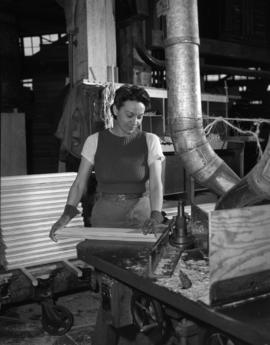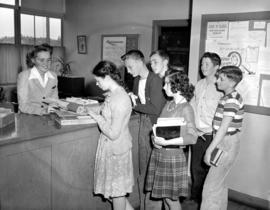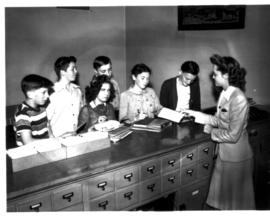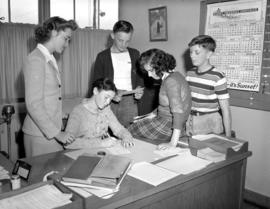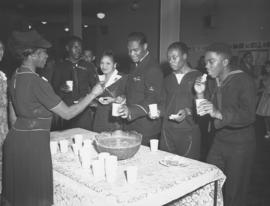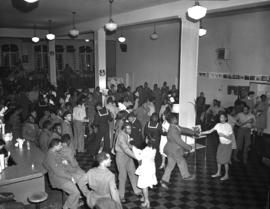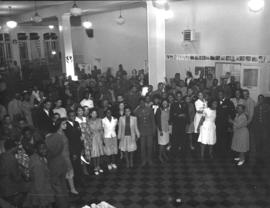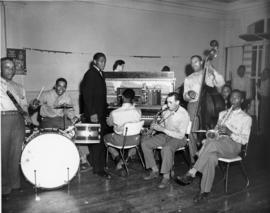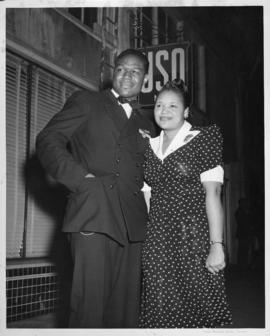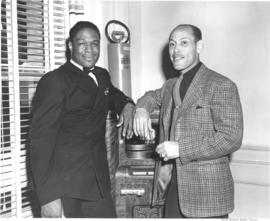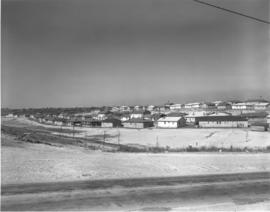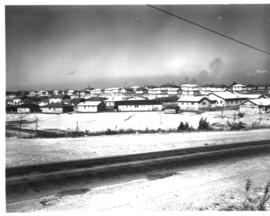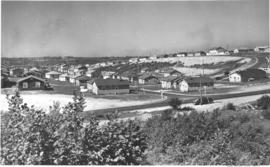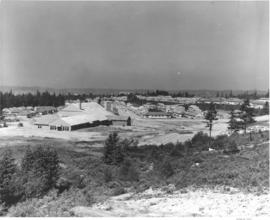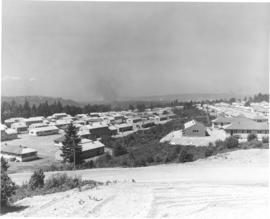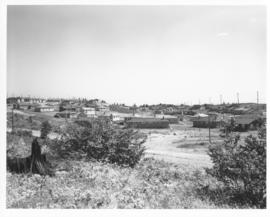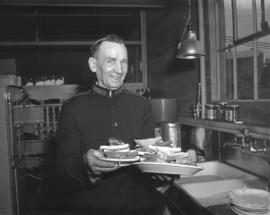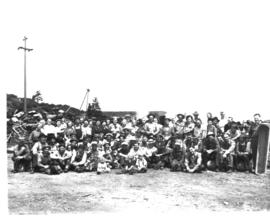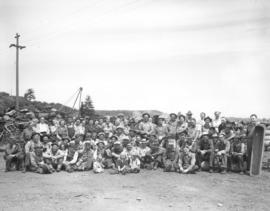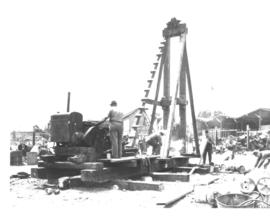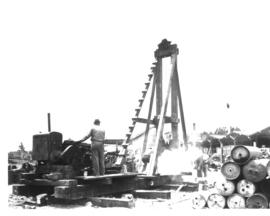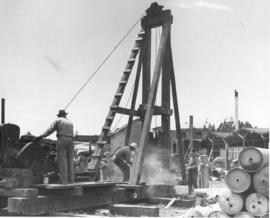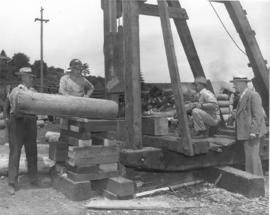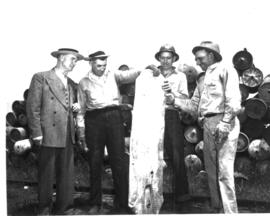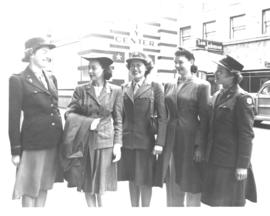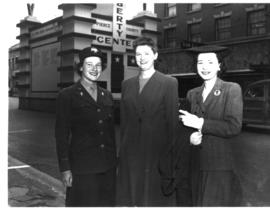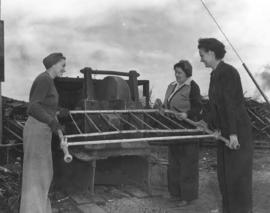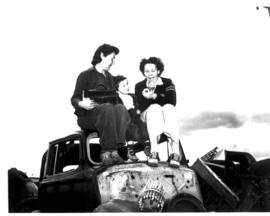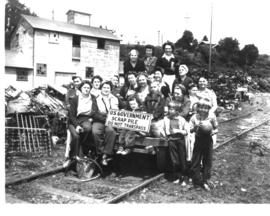ca. 1943. In this photograph taken around 1943, Doris "Dorie" Miller, a hero from Pearl Harbor, posed outside of Tacoma's U.S.O. #2, 713-715 Commerce, with Druetta McCabe, then a volunteer USO hostess. On December 7, 1941, Mr. Miller was stationed on the USS West Virginia at Pearl Harbor as a Mess Attendant First Class, a cook. During the Japanese bombing, he carried wounded sailors to safety, including the mortally wounded Captain of the ship. He then manned a 50 caliber Browning anti-aircraft gun until it ran out of ammunition and he was ordered to abandon ship. He managed to shoot down several Japanese planes, despite the fact that he had no artillery training. He was awarded the Navy Cross for his bravery and valor, the first African American sailor to win this honor. He was killed in action on November 24, 1943, when his ship, the escort carrier Linscome Bay, was sunk during Operation Galvanic. (U.S.O. #2 brochure from Recognition Ceremony on March 30, 1943; www.history.navy.mil)
World War, 1939-1945--Social aspects--Tacoma; USO clubs (Tacoma)--1940-1950; African Americans--Tacoma--1940-1950; Heroes--Tacoma; Miller, Doris; McCabe, Druetta;
